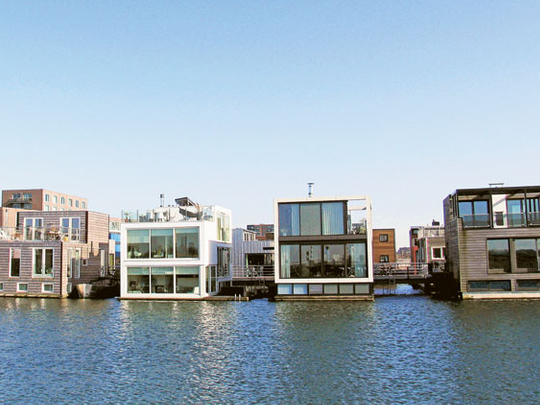
Bangkok: A floating mosque and golf course for the submerging Maldives islands. Amphibious homes in the Netherlands lifted to safety as waters surge beneath them. A hospital perched on 400 stilts to protect patients from Thailand's devastating floods and the encroaching sea nearby.
Around the world architects and city planners are exploring ways mankind and water may be able to coexist as oceans rise and other phenomena induced by climate change, including extreme, erratic floods, threaten land-rooted living.
With the Dutch at the helm, projects in the cutting-edge field of aqua-architecture are already in place, including a maritime housing estate, floating prison and greenhouses in the Netherlands. An increasing number are coming on stream, and while earlier blueprints appeared to be the stuff of science fiction, advocates say leaps of imagination are still needed given the magnitude of the danger.
"The focus on floating solutions has grown enormously. It has shifted from freak architecture to more sustainable, flexible alternatives," says Dutch architect Koen Olthuis, citing growing support by governments and interest among private investors in Asia and Russia.
"We will have to live with a more watery environment. There is no choice," says Danai Thaitakoo, a Thai landscape architect whose own Bangkok house was swamped last year as the country suffered its worst floods of modern times.
The Thai capital is also among the mega coastal cities projected by the end of this century to lie totally or partially under water as global warming boosts sea levels, according to the UN Intergovernmental Panel on Climate Change. Others include Tokyo, London, Jakarta, Sydney and Shanghai.
Floating platforms
While in earlier decades architects and planners, dreamed of entire marine cities housing millions, most today are proposing a mix of defending communities with barriers and building on water using floating platforms, raised or amphibious structures still being devised.
"Climate change will require a radical shift within design practice from the solid-state view of landscape urbanism to the more dynamic, liquid-state view of waterscape urbanism," says Danai, who is involved in several projects based on this principle.












